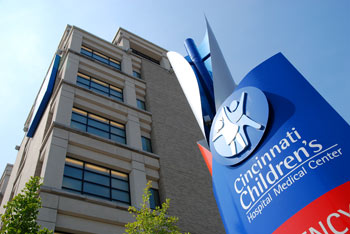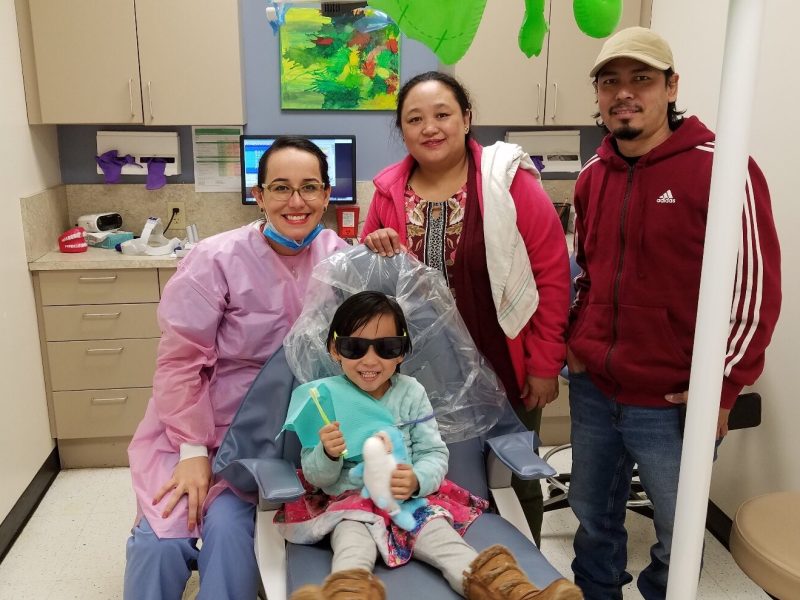New Uptown = New Urbanism
Uptown Cincinnati’s new developments are embracing the smarter principles of land use, blending bold vision and design with respect to community. The Burnet Avenue Revitalization Plan and recent developments like Stetson Square show how New Urbanism is the New Uptown.

 Visit an Uptown neighborhood community meeting, public charrette, or the office of the Uptown Consortium, and you’re likely to see posterboards of colorful renderings of current and future development projects. Look at those boards more closely, and it’s clear from the generous dotting of little green circles (trees) and large green rectangles (greenspace), that the new Uptown is all about New Urbanism.
Visit an Uptown neighborhood community meeting, public charrette, or the office of the Uptown Consortium, and you’re likely to see posterboards of colorful renderings of current and future development projects. Look at those boards more closely, and it’s clear from the generous dotting of little green circles (trees) and large green rectangles (greenspace), that the new Uptown is all about New Urbanism.
While some of the new urban development predates the Consortium, like University of Cincinnati’s ribboned Master Plan that overhauled the campus of concrete surface lots to walkable greenspace a few years ago, the theme working its way throughout Uptown’s new development is walkable urbanity.
The area of Uptown paints a broad stroke through the center of Cincinnati, including the six unique neighborhoods of Avondale, Clifton, Corryville, Mt. Auburn, Clifton Heights, University Heights and  Fairview (aka CUF) and 4 of the 6 largest employers in Cincinnati, including Cincinnati Children’s Hospital Medical Center, Health Alliance, TriHealth, the University of Cincinnati, as well as the Cincinnati Zoo and Botanical Gardens. Knowing strength in numbers, these institutions came together to form the Uptown Consortium, and as a result have partnered with the communities, spurred growth and brought the area’s leading developers to Corryville, Avondale, and Mt. Auburn in recent years working to make all of Uptown a place, as their slogan goes, to Live, Work and Play.
Fairview (aka CUF) and 4 of the 6 largest employers in Cincinnati, including Cincinnati Children’s Hospital Medical Center, Health Alliance, TriHealth, the University of Cincinnati, as well as the Cincinnati Zoo and Botanical Gardens. Knowing strength in numbers, these institutions came together to form the Uptown Consortium, and as a result have partnered with the communities, spurred growth and brought the area’s leading developers to Corryville, Avondale, and Mt. Auburn in recent years working to make all of Uptown a place, as their slogan goes, to Live, Work and Play.
Tony Brown, President and CEO of the Uptown Consortium says one of their primary goals is to “phase in development, in such a way so that when we talk about Uptown and we talk about different places to live and play , we create these distinct districts within Uptown.” But to do this, the Consortium has had to break down a few barriers among its community partners.
Breaking Down the Fortress for the Community: Burnet Avenue Revitalization
When it came time to re-develop Burnet Avenue, the first thing was to listen and appropriate the right mix for all parties involved: Cincinnati Children’s Hospital, the residents of Avondale, the goals of the Consortium and its community redevelopment partners.
At first there were some barriers to overcome. Historically the community hadn’t wanted hospital expansion to encroach upon their neighborhood. So in response, Cincinnati Children’s Hospital had created an economic fortress, fulfilling needs through services within their own walls. Brown notes, “Then there was no reason to leave the campus, and as a result, the Burnet Avenue business district became distressed. With New Urbanism, you have to create pedestrian-friendly neighborhood business districts, and there was nothing friendly along Burnet Avenue north of Erkenbrecher.”
 The Burnet Avenue Revitalization Team (BART) initially had to convince Children’s that they would be the catalyst in redevelopment, that if they could put medical office buildings across the street to tie to their main campus, “it would benefit more than just the institution, but also benefit the community with new retail, new housing, so that those economics would become integrated,” said Brown.
The Burnet Avenue Revitalization Team (BART) initially had to convince Children’s that they would be the catalyst in redevelopment, that if they could put medical office buildings across the street to tie to their main campus, “it would benefit more than just the institution, but also benefit the community with new retail, new housing, so that those economics would become integrated,” said Brown.
Symbolic of this integration of community with institution and the redevelopment principles of BART is the bold architectural design created by local firm DNK Architects. Called Weaving Together the Community, it features design elements, building materials, and an UrbanScape site of meandering walkways that will create a warm, neighborhood feel.
“Weaving and braiding are key elements in African-American culture and are symbolic of how the community has come together to help revitalize Avondale,” said DNK President David Kirk, who developed the design theme. “Our shared goal is to help make Avondale, in general, and Burnet Avenue, in particular, a destination.”
The Uptown Consortium is master developer for the Burnet Avenue project and is investing more than $50 million for site acquisition and development. The City of Cincinnati has contributed more than $1 million in land grants for this first phase.
 The project will include more than 150,000 square feet of office and retail space, including the additional office space for Cincinnati Children’s Hospital Medical Center, a 45,000-square-foot office building for the Cincinnati Herald weekly newspaper, and up to 60 units of owner-occupied housing. Workforce housing that is appropriate for the market, job opportunities, and plans for local retailers, including minority-owned businesses, are all part of the Burnet Avenue Revitalization plan. Brown anticipates additional phases of the project will include senior housing, and is studying the placement of a small-business incubator as well.
The project will include more than 150,000 square feet of office and retail space, including the additional office space for Cincinnati Children’s Hospital Medical Center, a 45,000-square-foot office building for the Cincinnati Herald weekly newspaper, and up to 60 units of owner-occupied housing. Workforce housing that is appropriate for the market, job opportunities, and plans for local retailers, including minority-owned businesses, are all part of the Burnet Avenue Revitalization plan. Brown anticipates additional phases of the project will include senior housing, and is studying the placement of a small-business incubator as well.
Uptown Consortium spokesperson Joe Shields notes the project’s potential for significant neighborhood impact. “It’s not piecemeal, flipping a house here or there, but this will be a bold change in the urban landscape. The Burnet project is more revolutionary than evolutionary.”
Creating Community within Community: Placemaking in Uptown Cincinnati
 The Burnet project isn’t the only bold development to transform an Uptown neighborhood. Despite the media doom and gloom of the housing market, newer projects surrounding the University and hospitals have been successful in getting the right product on the market. One case in point is the Village at Stetson Square by Great Traditions Land and Development Company. Known for their lavish suburban golf course communities, the developer’s jump into two city blocks along Martin Luther King Ave. was a bold departure – but a refreshing one.
The Burnet project isn’t the only bold development to transform an Uptown neighborhood. Despite the media doom and gloom of the housing market, newer projects surrounding the University and hospitals have been successful in getting the right product on the market. One case in point is the Village at Stetson Square by Great Traditions Land and Development Company. Known for their lavish suburban golf course communities, the developer’s jump into two city blocks along Martin Luther King Ave. was a bold departure – but a refreshing one.
Jim Sullivan, Executive Vice President of Great Traditions views the project as their line of transition from being strictly a Greenfield developer. “We’ve been the suburban developer, known for these master-planned communities, but when we took that [to Uptown], it holds true to creating a sense of place, a sense of vibrancy and community, and shows it can be done in an urban setting.”
 With ample green space and common areas, the Village at Stetson created its own community within community. That village feel, combined with round-the-clock amenities, makes Stetson especially appealing to medical professionals whose unpredictable and inflexible schedules can benefit from the convenience of a walk-to-work scenario. Michael Ralls, a third-year UC medical student from Solon, Ohio was one of the first residents in the Stetson square townhouses, when his parents discovered it after staying at the nearby Kingsgate hotel for Michael’s white coat ceremony. Ralls appreciates the conveniences, “it’s very nice aesthetically – inside and outside – and within walking distance of the hospitals.” Stetson also features events for its residents like wine tastings and cookouts. Flynn notes that the resident community is “truly international” and many participate in the events.
With ample green space and common areas, the Village at Stetson created its own community within community. That village feel, combined with round-the-clock amenities, makes Stetson especially appealing to medical professionals whose unpredictable and inflexible schedules can benefit from the convenience of a walk-to-work scenario. Michael Ralls, a third-year UC medical student from Solon, Ohio was one of the first residents in the Stetson square townhouses, when his parents discovered it after staying at the nearby Kingsgate hotel for Michael’s white coat ceremony. Ralls appreciates the conveniences, “it’s very nice aesthetically – inside and outside – and within walking distance of the hospitals.” Stetson also features events for its residents like wine tastings and cookouts. Flynn notes that the resident community is “truly international” and many participate in the events.
Reviving Short Vine to fulfill the missing link
Ralls says when he does have time for socializing and entertainment outside of Stetson he frequents Newport on the Levee, or occasionally heads downtown. Soon, Uptown hopes to restore an entertainment and retail node of its own, specifically the Short Vine district.
The recently announced development plans at each of the “bookends” of Short Vine help set the stage for revitalization. Anchor Properties plans to redevelop the Kroger-based University Plaza site, and JFP Properties’ has announced plans for a Hampton Inn hotel and IHOP at the other end of Vine street. Working with the private investment and the City’s University Village Urban renewal plan developed in 2005, the Consortium is working as an intermediary along the Short Vine strip, readying a return to its glory days as an urban nightlife hotspot and campus village by day. It too will incorporate the new urbanism feel, seeking a mix of civic, retail, entertainment and hospitality, with an emphasis on greenspace, and lighting and wayfinding to address safety.
Brown is hoping that Uptown can tackle the different mix of retail, entertainment and hospitality in a way that sustains Short Vine and all of Uptown. “Whether we’re talking Short Vine, Burnet Avenue, Ludlow, Calhoun Street, we need a way that collectively it says that Uptown is special, but yet separately, each district is able to provide a retail mix that continues to make them a striving, sustainable business district.”
Photography by Scott Beseler
Burnet Avenue north of Erkenbrecher DNK construction site
Tony Brown, President and CEO of the Uptown Consortium
DNK construction site
Chilrens Hospital
Stetson Square
View from Stetson Square













